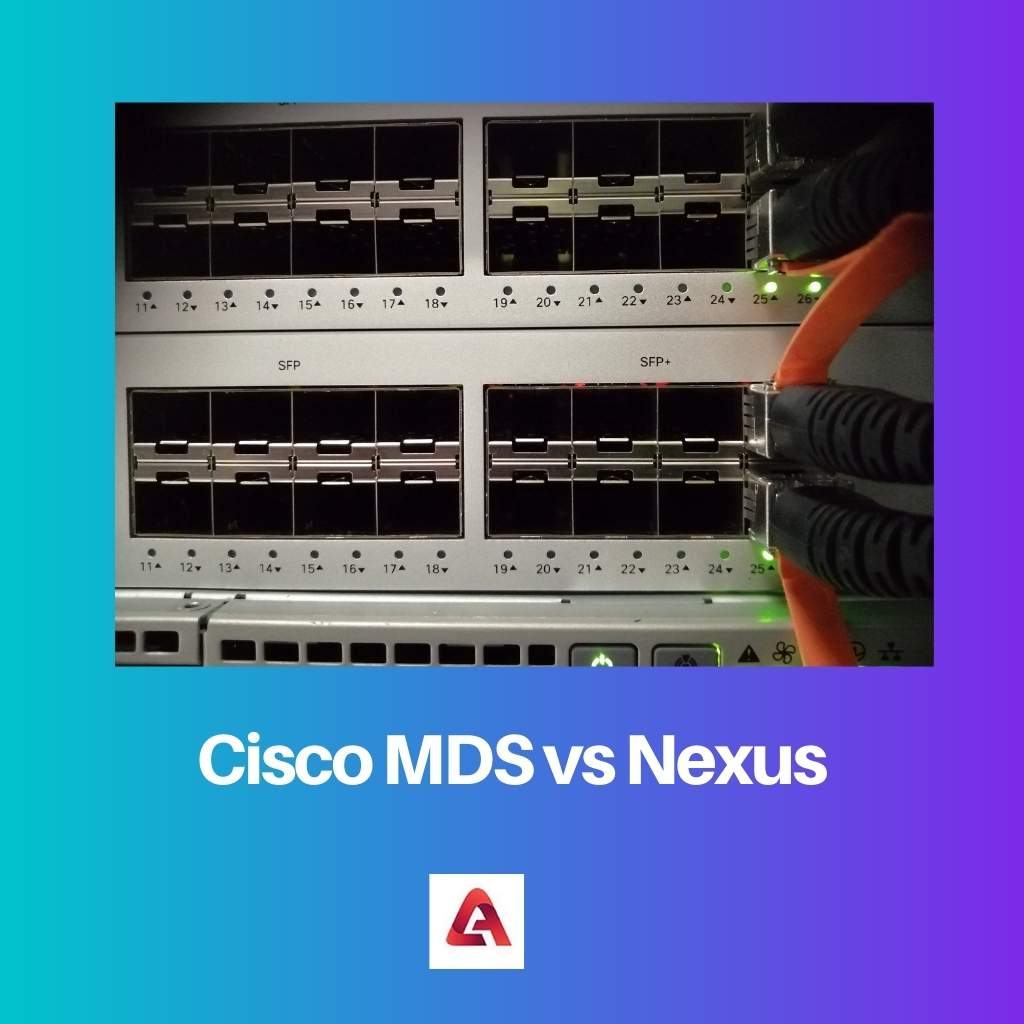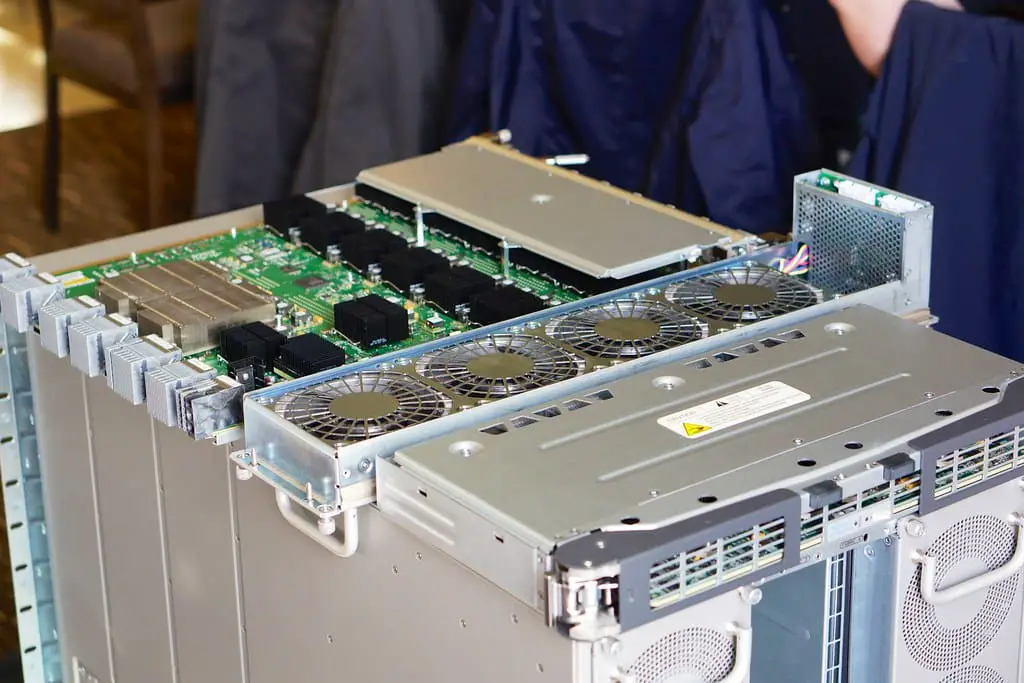Cisco is a leading networking and information technology company that connects computers that initiate data transmission to form connections over the internet. It develops networking hardware such as switches, routers, and other networking devices.
We’ll discuss data center switches like Cisco MDS and Nexus and the key differences between them. They provide a strong networking alliance as well as effective security.
Key Takeaways
- Cisco MDS is a Fibre Channel switch used for storage networking, while Cisco Nexus is an Ethernet switch used for data networking.
- MDS offers higher port density and better security features for storage networking than Nexus.
- Nexus offers faster speed and more advanced features for data networking than MDS.
Cisco MDS vs Nexus
The difference between Cisco MDS and Nexus is that Cisco MDS and Nexus use different operating systems. Cisco MDS uses SAN-OS, whereas Nexus uses NX-OS. The NX-OS is based on and inspired by the SAN-OS. The SAN-OS was originally an underlying software for Cisco MDS switches, but the advanced NX-OS is now installed in both Cisco MDS and Nexus switches.

Cisco MDS’s fiber channel storage switch has been re-established. With an intellectual framework, the software supports multilayer and numerous transport features.
The storage architecture is well-defined, allowing for flexibility and broad scalability. With fierce competition in the IT sector, the introduction of such data center switches meets the standards of dependability and security.
Nexus was released on January 28, 2008, with NX-OS. The operating system has flexible scalability, which means it can be scaled up as the workload expands.
It is built on the Cisco ACI (Application Centric Infrastructure) architecture, which ensures intellectual integration of high-defined software and hardware fusion. ASIC technology is employed in the Nexus series.
Comparison Table
| Parameters of comparison | Cisco MDS | Nexus |
|---|---|---|
| Operating system | SAN-OS | NX-OS |
| Release year | 2002 (Cisco MDS 9500)July 10, 2008 (MDS SAN-OS) | January 28, 2008 (Nexus 7000) |
| Mode | SAN (storage area networking) | ACI mode, ASIC technology |
| Purpose | Storage area networking integration | Open network environment (ONE) (Nexus 3000) |
| Others in the series | MDS 9200, MDS 9100, etc | Nexus 7000, Nexus 9000, etc. |
What is Cisco MDS?
Cisco MDS, or multilayer director switches, significantly reduces the total cost of ownership (TOI). The Cisco MDS is a data center switch that runs on SAN-OS, a highly effective operating system that is used to monitor the demanding workload.
A Cisco MDS switch manages the storage area networking.
Cisco MDS has the features needed to manage the growing workload in storage area networking. It provides comprehensive visibility, asset protection, IT automation, and security. Cisco MDS has created 64 GB of fiber channeling.
MDS’s modern infrastructure can support switch capacities of up to 3 Tbps per slot. It is designed so that the upgraded version can be accommodated on the same chassis without needing to upgrade the forklift.
It allows the use of FCIP and fiber channel in adjacent lines without preventing them. It has the widest scaling range in the industry and can be scaled up and down depending on the situation.
For example, the Cisco MDS (9718) has 768 line-rate ports built into a single switch, making it the only switch with such high scalability. It embodies proactive architecture, which enables early changes and, as a result, helps predict the consequences.
It provides a defined switch-integrated solution that makes use of TAP (Traffic Access Point) and NPU (Networking Processing Unit). Aside from that, it has exceptional reliability, flexibility, availability, and simplified operation.
Since its initial release in 2005, it has undergone various upgrades from 2 to 4 to 8 to 10 Gbps fiber channels with no downtime. The Cisco MDS 9000 supports NVMe without requiring any changes to the hardware architecture.

What is Nexus?
Nexus data center switches were first introduced in 2008. They use NX-OS and offer both modular and fiber switches. It has allowed access to network and storage resources since its inception.
NX-use OS makes it compatible with software that comes in modular packages. They support both Ethernet and fiber channeling in the same chassis. It also supports FCoE.
With 1 or 10 or 25 or 50, or 100 to 400 multi-speed ports, the Nexus 9000 model improves performance and scalability. With layered encryption, MACsec, the switch series provides intense visibility and advanced security.
It also reduces TCO by implementing a unified port that supports 10/25 GbE and 8/16/32 G fiber channels.
Excellent IP and RDMA storage over converged Ethernet is supported with the intellectual buffer, 50 percent more application performance, and no packet loss.
The model features an ACI leaf-spine architecture with flexible fixed and modular switches and cloud-scale ASIC capabilities. They come in sizes ranging from 4 to 8 to 16 slots.
They have a 400G portfolio foundation that allows for 400G data center networking with 4 RU, 2 RU, or 1 RU switch.
They improved data center automation by providing flexible scalability and high-density performance.VXLAN is supported, making it ideal for cloud computing services.
Main Differences Between Cisco MDS and Nexus
- The operating system installed in Cisco MDS is SAN-OS, whereas Nexus uses NX-OS.
- The release year of Cisco MDS is 2002 (Cisco MDS 9500), July 10, 2008 (MDS SAN-OS), and the Nexus series was introduced in 2008.
- Cisco MDS operates in Storage Area Networking mode, whereas Nexus operates in ACI mode and employs ASIC technology.
- Cisco MDS’s goal is storage area networking integration, while Nexus is responsible for an Open network environment (ONE) (Nexus 3000).
- Others in the Cisco MDS series include MDS 9200, MDS 9100, and others in the Cisco Nexus series include Nexus 7000, Nexus 9000, and others.

The extensive details about the capabilities of Cisco MDS and Nexus are impressive. The article effectively conveys the technological advancements in networking hardware.
The article provides a clear explanation of the differences between Cisco MDS and Nexus. It’s great to see the level of technological advancement in networking hardware.
The detailed information is greatly appreciated. The hardware and software capabilities of the data center switches were explained clearly.
The article provides a comprehensive overview of Cisco MDS and Nexus, clearly highlighting their key features and advantages.
Great comparison between Cisco MDS and Nexus. The performance and scalability aspects are well detailed.
The article explains the advantages of each system. The in-depth analysis of each switch is very interesting and informative.
The thorough explanation of Cisco MDS and Nexus is beneficial for understanding the differences and unique applications of these data center switches.
The article offers valuable insights into the features and advancements of Cisco MDS and Nexus switches. The detailed comparison aids in understanding their applications.